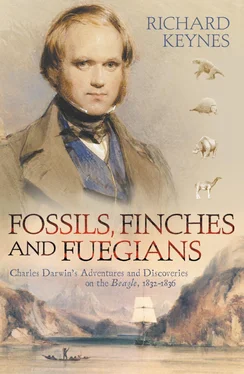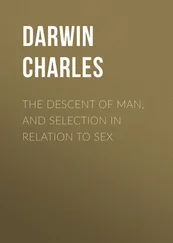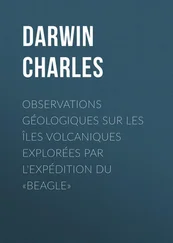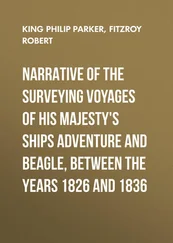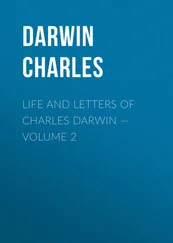The English were jealous of their success, but for a long time could only benefit from it by robbery, following the example of Sir Francis Drake when he returned from his circumnavigation in 1580 with a rich cargo of treasures stolen from the Spanish colonies at Queen Elizabeth’s behest. In 1806 Buenos Aires was attacked by a British force, which was successfully repelled, giving the Argentinians the confidence to join the other Spanish colonies in breaking away from Spain. By 1820 they were all independent countries, though not always at peace with one another.
The Hydrographic Office of the Royal Navy, founded in 1795, was initially responsible for looking after the Admiralty’s collection of navigational charts, and of the ‘Remark Books’ about foreign shores and harbours that all naval captains were required to keep. In 1817 the second Hydrographer, Captain Hurd, was empowered to recruit some surveyors of his own, and had soon built up a programme of a dozen Admiralty surveys in home waters and abroad. Trade was quickly building up with the new governments of South America, and there was a need both for a British naval presence in South American waters, and for accurate charts of the coastline to assist shipping. Hence it came about that:
In 1825, the Lords Commissioners of the Admiralty directed two ships to be prepared for a Survey of the Southern Coasts of South America; and in May of the following year the ADVENTURE and the BEAGLE were lying in Plymouth Sound, ready to carry the orders of their Lordships into execution. These vessels were well provided with every necessary, and every comfort, which the liberality and kindness of the Admiralty, Navy Board, and officers of the Dock-yards, could cause to be furnished. 32
HMS Adventure was a ‘roomy’ ship of 330 tons, without guns, under the command of Captain Phillip Parker King. HMS Beagle was a smaller vessel of 235 tons, rigged as a barque carrying six guns, and commanded by Captain Pringle Stokes. On 19 November 1826, Adventure and Beagle sailed south from Monte Video, and until April 1827 carried out surveys in the south of Patagonia and in Tierra del Fuego, around the Straits of Magellan. In June 1827 they arrived back at Rio de Janeiro. Six months later, now accompanied by a schooner named Adelaide to assist in the surveys – for whose purchase Captain King had prudently obtained Admiralty approval in advance, unlike Captain FitzRoy when in 1833 he bought the second and smaller Adventure – they sailed south again. In January 1828 the Adventure was anchored for the winter at Port Famine. Captain Stokes was ordered in the Beagle ‘to proceed to survey the western coasts, between the Strait of Magalhaens and latitude 47° south, or as much of those dangerous and exposed shores as he could examine’, and to return to Port Famine (Puerto Hambre) by the end of July. Captain King allotted himself a more comfortable task in the Adelaide , charting the southern parts of the Strait relatively close at hand, and collecting birds and plants.
When at the appointed time the Beagle returned to Port Famine with her difficult assignment conscientiously completed, Captain Stokes was found to be in a state of acute depression thanks to the extreme privations and hardships that he and his crew had suffered from very severe weather, both stormy and wet, when working in the Gulf of Peñas. On 1 August 1828 he tried unsuccessfully to shoot himself, and although the surgeons thought for a while that he might recover, he died in great pain on 12 August. He was interred at the Adventure ’s burial ground, the so-called English Cemetery two miles from Port Famine. (The tablet erected to his memory has since been moved to the Museo Saleciano in the modern town of Punta Arenas, some forty miles away along the Straits of Magellan.)
The Adventure and the Beagle , temporarily commanded by her First Lieutenant, William Skyring, sailed back to Rio de Janeiro in October for repairs and replenishment of their stores. Here Admiral Otway, Commander-in-Chief of the South American Station, appointed his young Flag Lieutenant, Robert FitzRoy, * to take over command of the Beagle in succession to Captain Pringle Stokes. His choice was successful, and FitzRoy had soon overcome the handicap of restoring the morale of a demoralised ship’s company well enough to continue the charting of one of the world’s most inhospitable coasts.
During 1829 the Adventure, Beagle and Adelaide conducted independent surveys at various points between Tierra del Fuego and Chiloe, coming together at Valparaiso in November. On 19 November the Beagle departed to survey more of the southern coasts of Tierra del Fuego before rejoining the Adventure at Rio de Janeiro for the final return to England. Working among the Camden and Stewart Islands to the south of the mouth of the Cockburn Channel, FitzRoy found tiresome anomalies in his compass bearings, and wrote in his journal for 24 January 1830:
There may be metal in many of the Fuegian mountains, and I much regret that no person in the vessel was skilled in mineralogy, or at all acquainted with geology. It is a pity that so good an opportunity of ascertaining the nature of the rocks and earths of these regions should have been almost lost. I could not avoid often thinking of the talent and experience required for such scientific researches, of which we were wholly destitute; and inwardly resolving, that if ever I left England again on a similar expedition, I would endeavour to carry out a person qualified to examine the land; while the officers and myself would attend to hydrography. 33
A week later it was reported to FitzRoy that the ship’s five-oared whale-boat, manned by Mr Murray, the Master, and a small crew, had been stolen during the night by the Fuegians near Cape Desolation, ‘now doubly deserving of its name’. The bad news was brought to the Beagle by two of the sailors, paddling a basket-like canoe that they had thrown together for the purpose, and whose curious structure was commemorated in the names given both to the small island on which Cape Desolation was located, and to the first of the Fuegians taken hostage by FitzRoy. *
On the Beagle ’s map of the Strait of Magalhaens (sic), 34 Basket Isle was inserted near the western end of Tierra del Fuego, with Thieves Sound to the north, and Whale Boat Sound to the east. In a modern map the area lies on the coast of Tierra del Fuego due south of Punta Arenas. FitzRoy responded to the theft with a campaign to capture hostages for return of the whale-boat, but the move failed, largely because the Fuegians showed no interest in exchanging their booty for their comrades, who remained quite happily on the ship. So he was left with the young girl Fuegia Basket, ‘as broad as she was high’, and the men York Minster, taken in Christmas Sound near the cliff of that name, and Boat Memory captured later nearby. He soon began to appreciate the practical difficulties that would arise in returning them immediately to their own peoples, and to consider the possibility of taking them back to England for a period of education before they were repatriated.
While a replacement for the whale-boat was being built at Doris Cove, situated on an island beside Adventurer Passage, Mr Murray was dispatched in the ship’s cutter to explore the waters to the north and east of Nassau Bay. Not far to the north, but a long way to the east, he sailed through a channel little more than a third of a mile wide which became known as the Murray Narrow, and which ‘led him into a straight channel, averaging about two miles or more in width, and extending nearly east and west as far as the eye could reach’. He had discovered the Beagle Channel, whose precise orientation on the map would provide grounds for legal dispute long afterwards in arguments between Argentina and Chile over territorial rights in the Antarctic. The new country was thickly populated, and on 11 May 1830, when the Beagle herself was in the Murray Narrow, some canoes full of natives anxious for barter were encountered. FitzRoy wrote: ‘I told one of the boys in a canoe to come into our boat, and gave the man who was with him a large shining mother-of-pearl button.’ 35 Jemmy Button, as the boat’s crew called him, quickly settled down in his new surroundings, and there were now four Fuegians in FitzRoy’s little group. 36
Читать дальше
